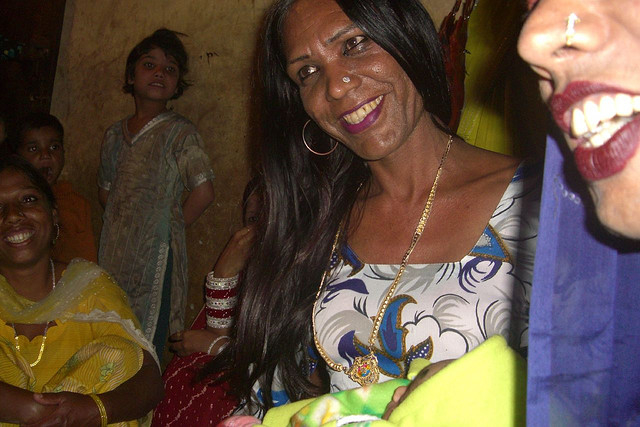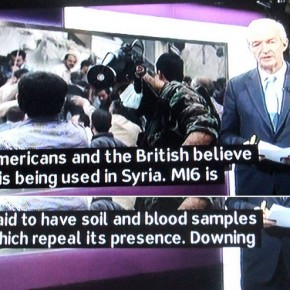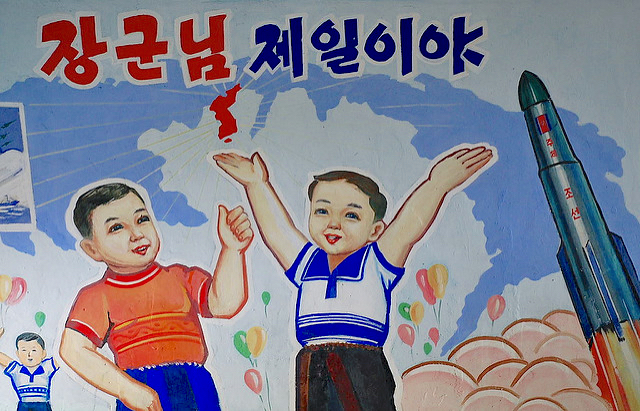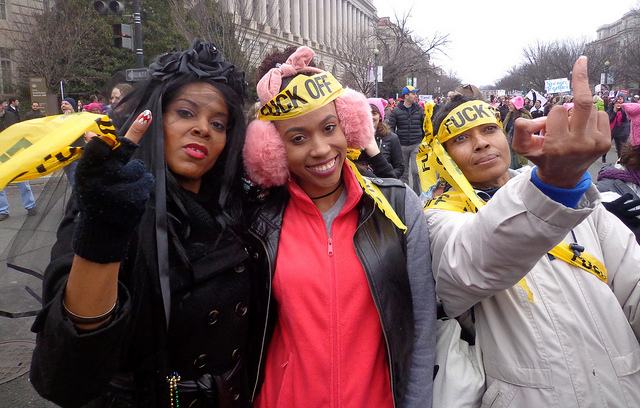The Lollywood drama Bol (“Speak Out”) was released in Pakistan in 2011. Written, directed, and produced by industry veteran Shoiab Mansoor, the film would go on to be the highest-grossing domestic production. This isn’t surprising, as it uses the trials of a Pakistani family to explore many issues of relevance to the country’s Muslim community.
Bol received enormous praise for its portrayal of a father’s rejection of his son’s desire to go in drag. The fact that this story would be a part of a major Lollywood release is just one indication of a new national discourse about Pakistan’s hijra population.
Hijras have been a part of the South Asian fabric for centuries, dating back to their role as courtesans in the palaces of the Mughal Empire. However, British imperialism significantly transformed state policy towards regarding them as a threat to public decency, with the British Raj going so far as to place hijras under the Criminal Tribes Act of 1871. These attitudes held through Partition, and have been additionally worsened by various other trends that are better explored elsewhere.
Many Pakistanis incorrectly believe that hermaphrodites constitute hijras exclusively. However, the term hijra is a genderqueer catch-all term that includes khusras (biological hermaphrodites,) narbans (castrated men,) and zananas (crossdressers.) Many narbans become as such due to ritualistically having their male genitalia removed in an initiation ceremony. It is additionally inaccurate to regard hijra gender identity as transitional towards biological femininity, as many hijras view and present themselves as South Asian women without significant medical intervention.
These small colonies are matriarchal, and are centered on a guru who is usually the eldest hijra. Their individual rise and growth is usually the result of families abandoning their transgendered children, which leads to them joining a colony that replaces familial ties. It is estimated that there are approximately 500,000 identified hijra currently living in Pakistan, although census problems make these figures difficult to verify. Their story as a minority is extremely bitter, as hijras are deeply misunderstood, and violently discriminated against, in nearly every aspect of Pakistani society.
Understanding Pakistani hijras means grappling with the apparent paradox of their roles in national society. Hijras are simultaneously included and excluded as a minority in Pakistan. Material realities have led to their existence being culturally accepted in our country, while being simultaneously ignored enough to propagate the injurious realities of their social condition.
This springs from a complex intersection of how modern patriarchal and labor processes function in Pakistan, under the broader consequences of imperialism. The fiercely gendered puritanical conflict that was waged upon them by colonial authorities, as well as right-wing anti-imperialist movements, occurred alongside the introduction of industrial modernity to the British Raj. This had two consequences: (1) Muslim populations inheriting and reproducing the moralistic and heavily gendered rhetoric which chastises hijras, particularly as these populations became later swayed by Saudi-disseminated Wahhabism, and (2) preventing hijras from meaningfully becoming a part of the public sphere, and with it the wage labor necessary to elevate their condition. This set into motion twin discriminations, one religious-cultural, and the other economic, which continue to intersect with one another to disenfranchise hijras today.

There has been a great deal of scholarly work done on how the colonial era, and its post-imperial fallout through neoliberalism, has affected gender in South Asia. To crudely summarize it, the consensus is that imperialism continues to push South Asia towards militarized forms of patriarchy that articulate themselves with population-specific forms of religious and philosophical fundamentalism.
Many Pakistani Muslims have been affected by these trends through Salafism, which holds that Islam must have a prescriptive effect on daily life through ritualistic discipline and a hardline adherence to the Qur’an and Hadith. This is rhetorically justified as an attempt to cleanse the Muslim ‘ummah of its social weaknesses that allegedly led to its current dysfunctions. Salafism’s articulations in Pakistani sexuality have essentially meant an adherence to principles of premarital chastity and intense restrictions on opposite-gendered interactions, most notably through gender segregation. Swaying from these models is dismissed as moral degeneracy, which ironically makes it quite similar to the Anglo-imperial concepts of sex that it purports to combat.
Hijras are third-gendered populations which have no clear role in this system. Their very existence constitutes a threat to the existing social order of sex in Pakistan, as accepting them means challenging gender binaries to some extent. The way this surfaces is extremely complex, and involves such factors as gender roles, performative masculinity, the very concept of heterosexuality, sexual monogamy as a property transaction, and so on.
Rather than tackle these subjects fully, it seems most important to note that it’s precisely the questions that hijras generate which are inconvenient to the status-quo. This is a characteristic of transgenderism in general, as gender has to be conceived differently on a mass scale for social acceptance to be complete. This is why it becomes so necessary for the patriarchal system in Pakistan to expel and brutalize hijras through its built-in violence against moral degenerates.
This drive was also echoed in the policies of the British Raj, which sought to deploy state violence against hijra populations. This made imperial authorities and early anti-colonialist Salafists inconvenient bedfellows, making the continuation of their discrimination possible through Partition. It also began the relationship between anti-hijra violence and the militarized Pakistani nation-state. The harassment and sexual violence that hijras suffer at the hands of Pakistan’s security forces today are a continuation of predecessor trends from the era of British rule, which continue to develop.
And as this violence occurs, the patriarchal status-quo in Pakistan still accepts the existence of hijra and refrains from attempting to eradicate them completely. The reason why is because their assigned status of degeneracy allows hijras to play an important role in the overall system, which rejects them visibly, but invisibly relies on them for overall cohesion. This is because hijras, through their status as hijra sex-workers (HSWs) play an important role as arbiters of illegitimate sex in Pakistan.

Legitimate sex here is defined as heterosexual intercourse after Islamic-sanctioned marriage rituals. Patriarchal structures fiercely regulate legitimate sex, which is why many Pakistani men find themselves with sexual needs that cannot be fully pursued. HSWs are able to meet this requirement by allowing Pakistani men a form of sexual release that, because it is illegitimate and with a culturally-sanctioned degenerate, is not seen as a sin.
This illegitimacy has drastic effects on violence towards HSWs, and also the safety of their employ. HSWs have become a disproportionately large part of Pakistan’s bustling sex trade, which continues to outpace reliable data about its size. Overwhelming majorities of HSW subjects in Lahore reported not using condoms during the survey period of a 2009 study, partially because condoms are seen as making the sex legitimate. Similarly high figures have been reported for sexually transmitted infections among Pakistani HSWs in a variety of studies.
These realities, which are partially produced by their rejection by the patriarchal system, are then taken as additional evidence for their status as degenerates because hijras become seen as diseased.
This idea of degeneracy is further reinforced by the economic realities of being a hijra in Pakistan. Hijras are socially excluded from many aspects of Pakistani life, but among the most significant are finance-based. The minority finds severe difficulty in issues of housing, employment, healthcare, and other matters that require independent capital power in Pakistan.
These and other difficulties owe mainly to their social exclusion, often from an early age. As a result, many hijras are unable to meaningfully participate in the labor process and generate wealth that can be used, however marginally, for their own ends. This inability to make new wealth means that many hijras are driven to simply absorbing existing wealth. This is precisely why most Pakistanis experience them as beggars who tap the windows of our cars in congested urban areas, or as dancers at social events. It is also why many hijra become HSWs out of sheer necessity. Rampant discrimination makes other means for obtaining wealth effectively impossible.
Hijras have been employed in other respects over the past six decades of Pakistani history, for example when they were hired as tax collectors in Karachi last year. But even in these cases, all forms of employment that are available to them share an exclusion from conventional wage labor. They also contain an enshrinement of the socially-necessary status of moral degeneracy that was discussed earlier, as begging, dancing, and sex work are regarded as ‘low’ professions. The informal, black-market structures surrounding these professions serve as further evidence for these preconceptions, which almost become self-fulfilling prophecies.
This leads to many hijras becoming a twisted labor underclass. Prevailing religious-cultural and economic ideologies cause them to be rejected from ‘normal society,’ forcing many hijras into a subservient position where they can be regarded as invisible. However, their history in the subcontinent combines with the crucial, taboo roles they play to help keep these systems moving forward to mean that they are also visible at the same time.
The paradox is created by deep flaws in how Pakistani society is structured, with hijras becoming a pressure point that can be used to observe wider failings in how the country constitutes itself.

Concurrently, though, many hijras are refusing to accept the current state of affairs and are actively organizing against it. One of the most positive consequences of the 2007 revolution and its restoration of Chief Justice Iftikhar Chaudary were landmark 2009 rulings that tackled hijra rights in a number of areas. These included discrimination in employment, inheritance, election registration, and a case regarding gender registration on National ID cards that was brought to the court by well-known Rawalpindi hijra leader Almas Bobby.
The effects of these rulings on state institutions, and the cultural discussions they helped catalyze (such as through the film Bol,) were immediately widespread and have helped improve the conditions of hijras in Pakistan. The community itself certainly continues to mobilize, such as through fielding candidates during parliamentary candidates earlier this year. One such activist, Sanam Fakir, who ran unsuccessfully in the Pakistan People’s Party stronghold of Sukkur, voiced these ambitions clearly when she said, “It is not our destiny to merely dance for others and hold begging bowls. We have a life to live.”
These mobilizations must continue. The fact that hijras are at the head of an intersection between multiple political problems means that they are natural allies in a number of ongoing struggles. They should be empowered to take stronger roles, and significant efforts should be undertaken by progressive movements to integrate them into activist life.
The fact is that hijras have come to occupy a space in Pakistani society where they can only find full liberation through a wider democratization of social and economic life. It is up to progressives, working in conjunction with hijras themselves, to ensure that recent achievements are merely a prelude to a better future.
Photographs courtesy of Whitney Lauren, Jonathan Ottensooer, R. Barraez, and Daniel Lofredo Rota. Published under a Creative Commons license.





